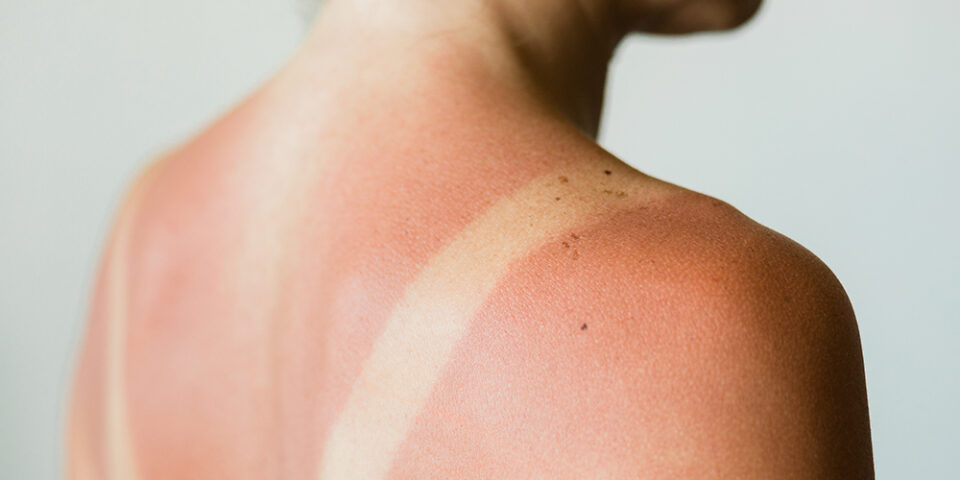How to treat a bad sunburn, rashes and more
Although summer is the perfect time to enjoy the outdoors, sunburns and rashes can certainly put a damper on the fun. Emergency medicine specialist Spencer Robinson, DO, offered some advice on how to treat a bad sunburn and common summer skin rashes.
How to treat a bad sunburn
“When you get a sunburn, you’ve already been exposed to UV radiation. There is not a ton that you can do for it,” Dr. Robinson said.
According to the Centers for Disease Control and Prevention, a sunburn’s symptoms usually start about 4 hours after sun exposure, worsen in 24–36 hours, and resolve in 3–5 days.
“When it comes to how to treat a bad sunburn, the main thing you can do is supportive care,” Dr. Robinson said. “Apply calamine lotion or aloe vera to the skin, which is soothing and might provide some relief. You can also take acetaminophen or ibuprofen for mild pain.”
If your sunburn is severe enough that blistering occurs, the CDC recommends lightly covering the area with gauze to prevent infection.
Do not break the blisters as this can slow healing and increase the risk of infection.
When the blisters break and the skin peels, dried skin fragments can be removed, and an antiseptic ointment or hydrocortisone cream may be applied. Continue to keep it covered during the day until fully healed.
When should you seek additional care for a bad sunburn?
Sometimes a really bad sunburn can set off an inflammatory response that can cause extreme itching. This is called pruritus.
“You can try taking some Benadryl, but make sure you follow the instructions on the bottle because taking too much can cause another whole host of problems,” Dr. Robinson said. “If the itching gets severe, it’s time to seek care.”
The best way to treat a bad sunburn? Prevent it from happening at all
Protect your skin by wearing sunscreen, a hat and sunglasses. “Remember that when your clothes get wet, they allow more UV radiation in, so wearing high-SPF clothes will make a difference when you’re outside exercising or if you’re at the pool or beach,” Dr. Robinson said.
Many clothing brands now sell ‘rash guards’ or other UV-protective clothing as long-sleeved shirts, t-shirts, shorts and more. Check for the UPF rating for verified protection. You want a minimum rating of 15, but some clothing with a higher level of protection may be labeled 50+.
What are some common summer skin rashes?
Rashes are common during the summer. Here are a few that are seen most often and how you can treat them at home.
- Heat rash. A heat rash is common among children. The skin looks red with tiny bumps that feel itchy or prickly, but it’s usually not painful. Cooling down, hydrating and wearing loose clothing should help. The rash should go away on its own in a few days.
- Acne. It’s common for acne to get worse in the summertime. The skin is oily and that oil with bacteria can irritate the skin. To clear it up, wash regularly and gently, especially after exercising or being outside.
- Poison ivy, poison oak and poison sumac rash. Because the oil of the plant is what causes the rash, it’s important to wash immediately with soap and water if you come into contact with one of these plants. Most rashes go away on their own within a couple of weeks. Use hydrocortisone cream to ease the itching and swelling. If the rash is severe, see a doctor.
You can find more information on how to identify poison ivy, poison oak and poison sumac plants in order to avoid exposure right here.
Find the care you need, close to home
Our primary care physicians provide well visits and everyday care when you need it with compassion and expertise.
Find Primary Care Near You

